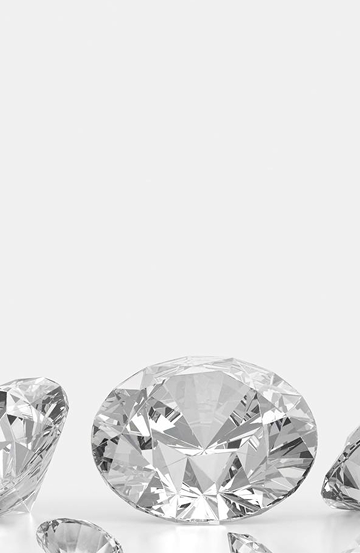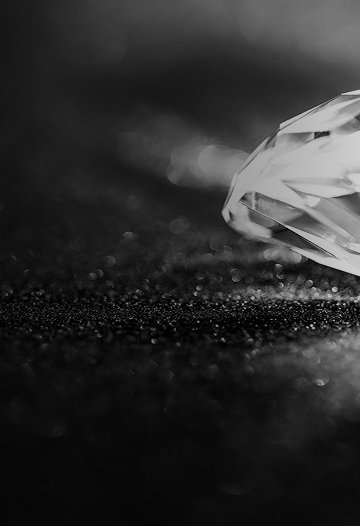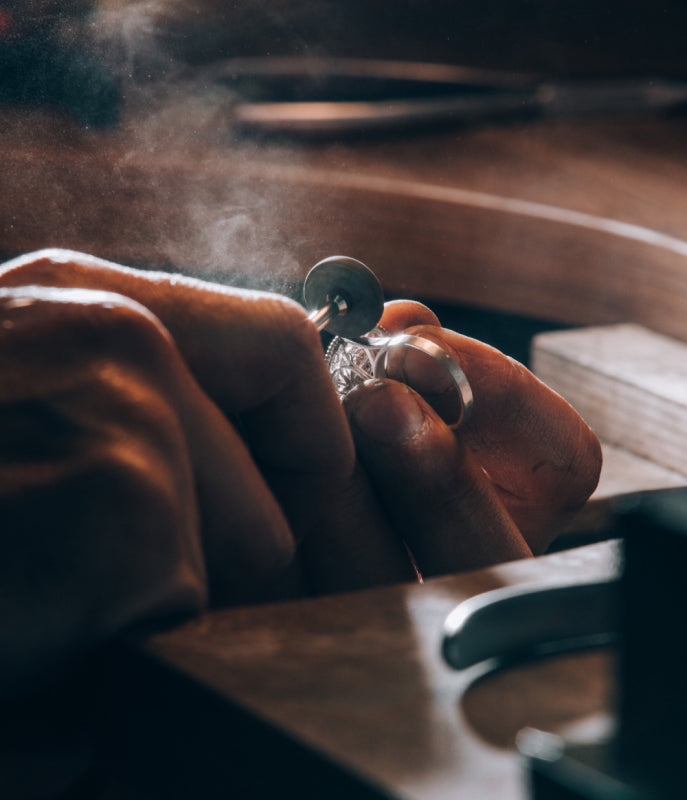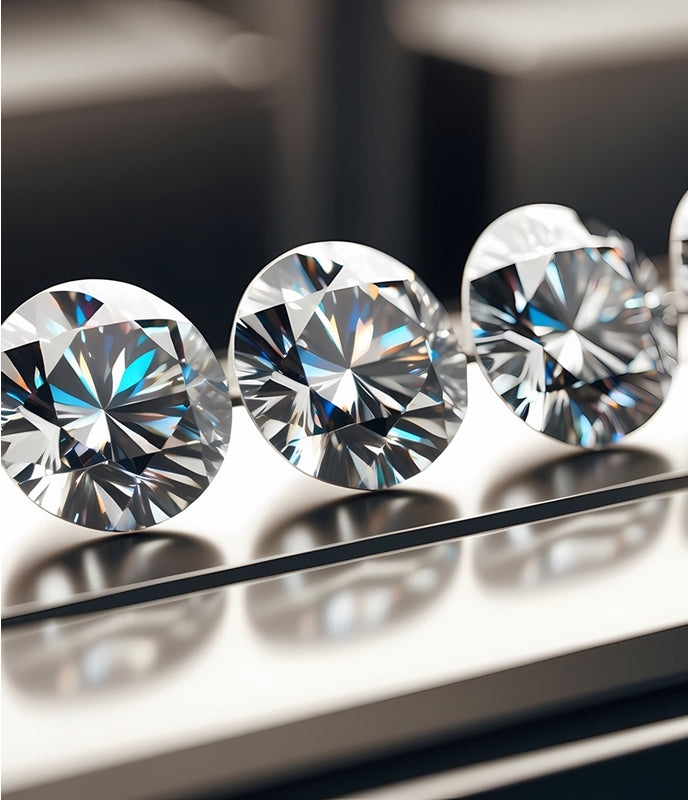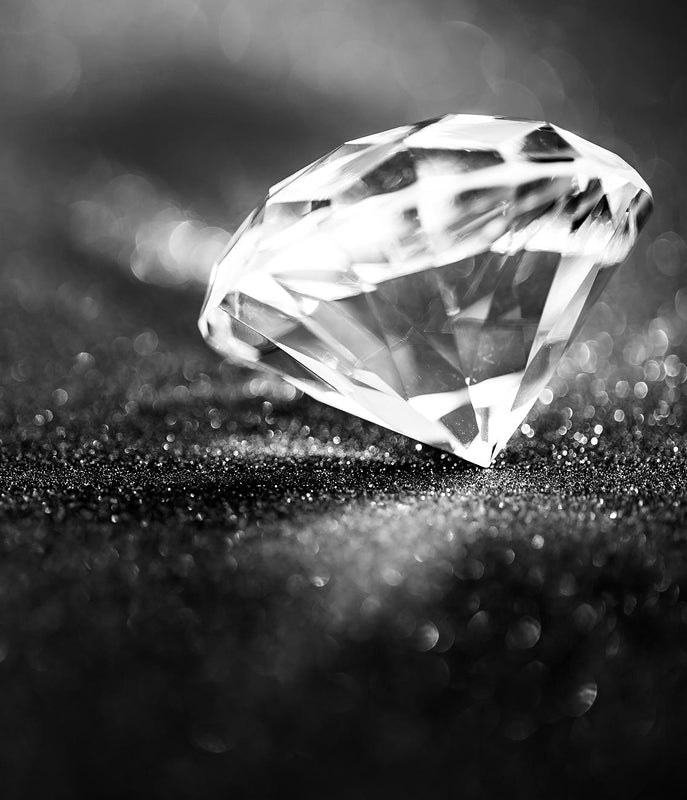The Human Touch Behind Diamond Cuts
Of all the 4Cs, cut is the only specification created by human hands. Cut is where the nature of a diamond is enhanced by nurturing it into its most brilliant form. The polishing process determines how beautiful a stone will be - a well cut stone maximizes the light performance of the diamond, making it sparkle more than a lower cut quality.
Cut is measured by three factors: Polish is how well the facets are placed and the overall finish of the diamond; Symmetry is the precise alignment of the facets; cut is reserved for round brilliant stones and grades the proportions of the diamond, ensuring the light is reflected through the top facets.
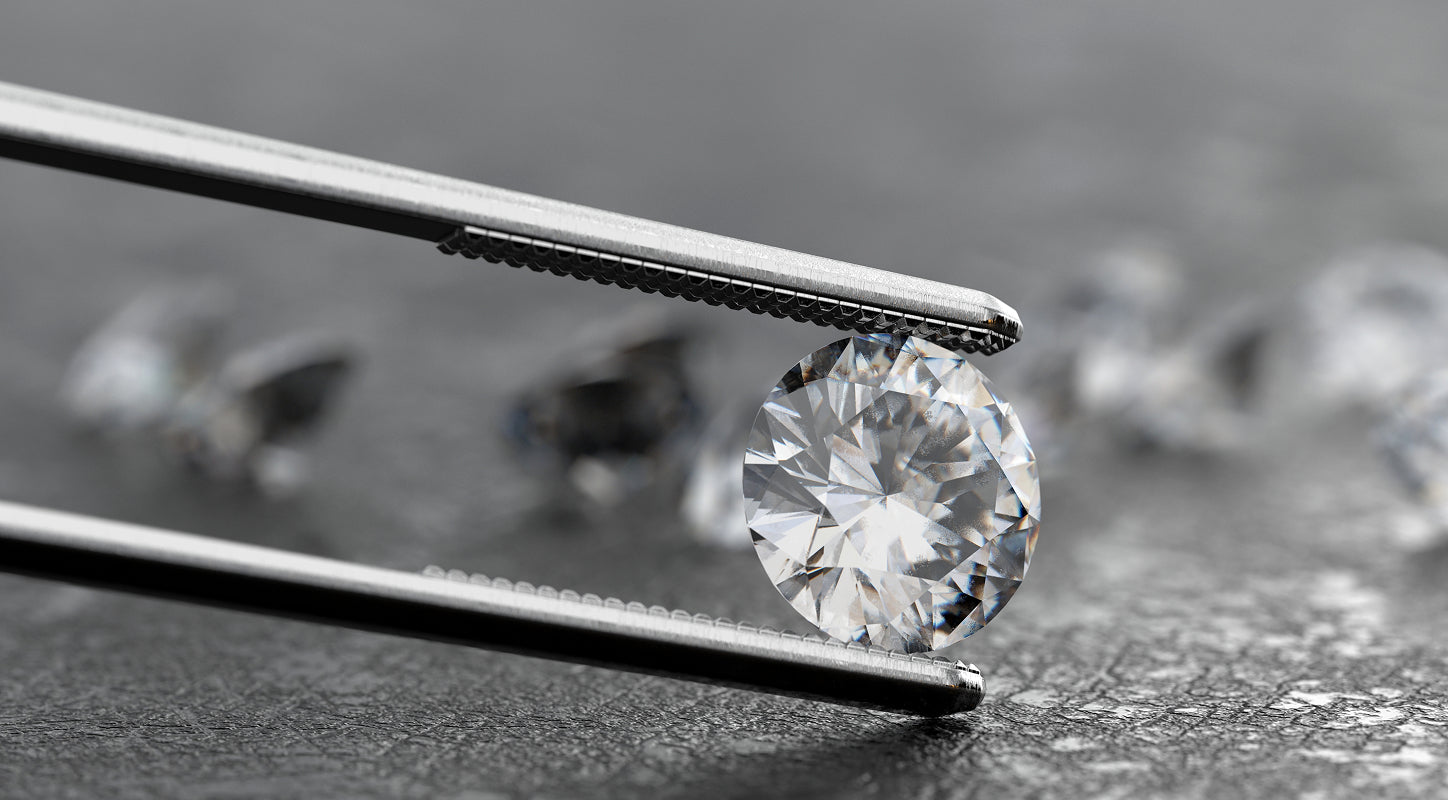
Understanding the Elements of a Diamond Cut
Cut quality is evaluated based on three key components:
- Polish: Refers to the smoothness and finish of the diamond’s surface. Expert polishing ensures the facets reflect light with clarity and precision.
- Symmetry: Measures how well the diamond’s facets are aligned and proportioned. Perfect symmetry enhances a diamond’s overall appearance and light reflection.
- Proportions (Cut Grade): Specific to round brilliant diamond cuts, this measures how well the diamond’s angles and facets interact with light. The better the proportions, the more light is reflected through the top of the diamond, increasing its brilliance.
Each of these aspects contributes to the overall beauty and value of a diamond cut, distinguishing an ordinary stone from an extraordinary one.
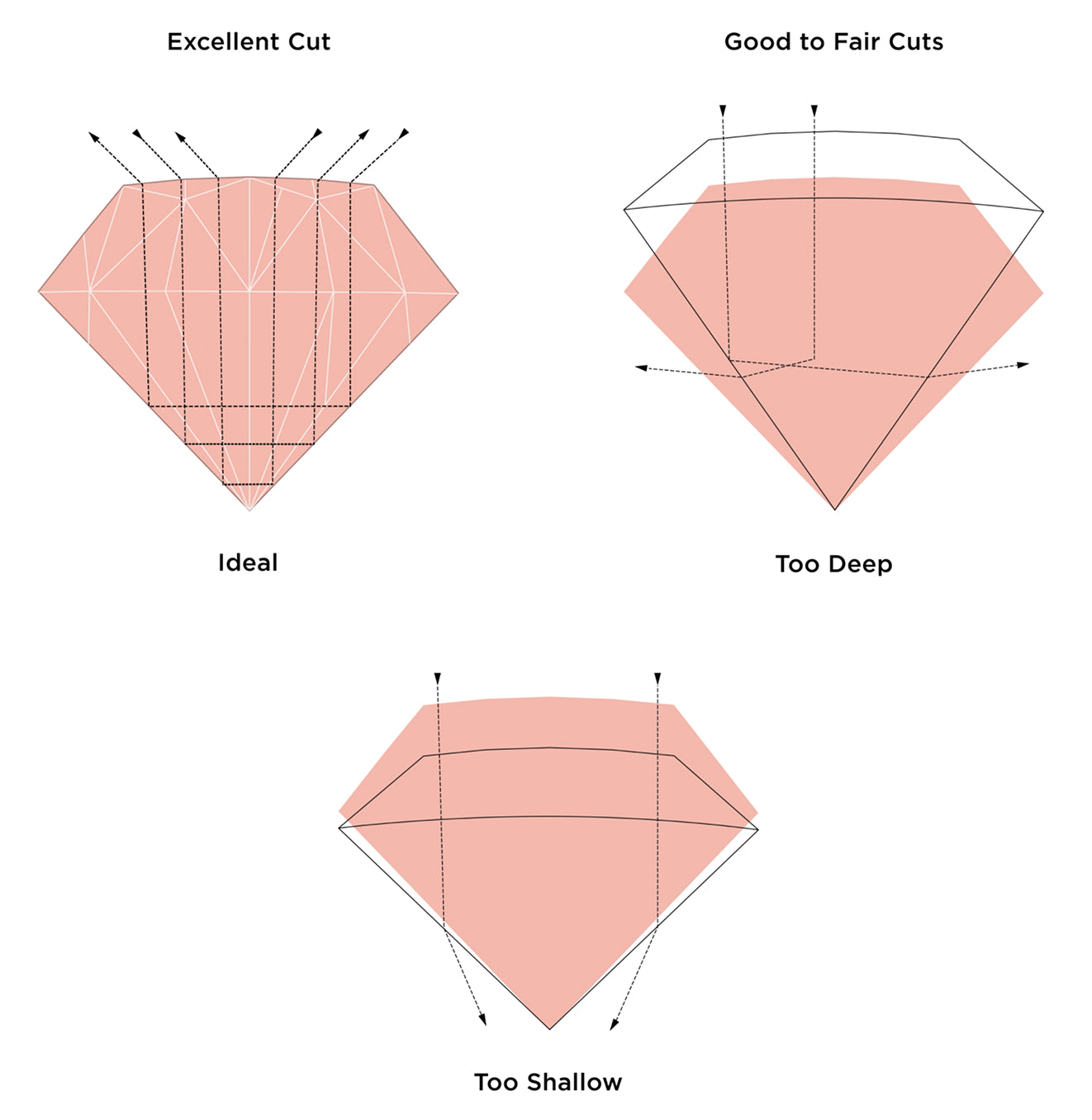
Brilliant Cut
Brilliant Cut diamonds have 57 to 58 facets. Facets are the small polished surfaces around the diamond. These contribute to the brilliant sparkle of each diamond. Brilliant cuts form a cone at the bottom of the stone which enhances the light refraction. Brilliant cuts are one of the most popular diamond cut types and can be found in rounded and oval diamonds.
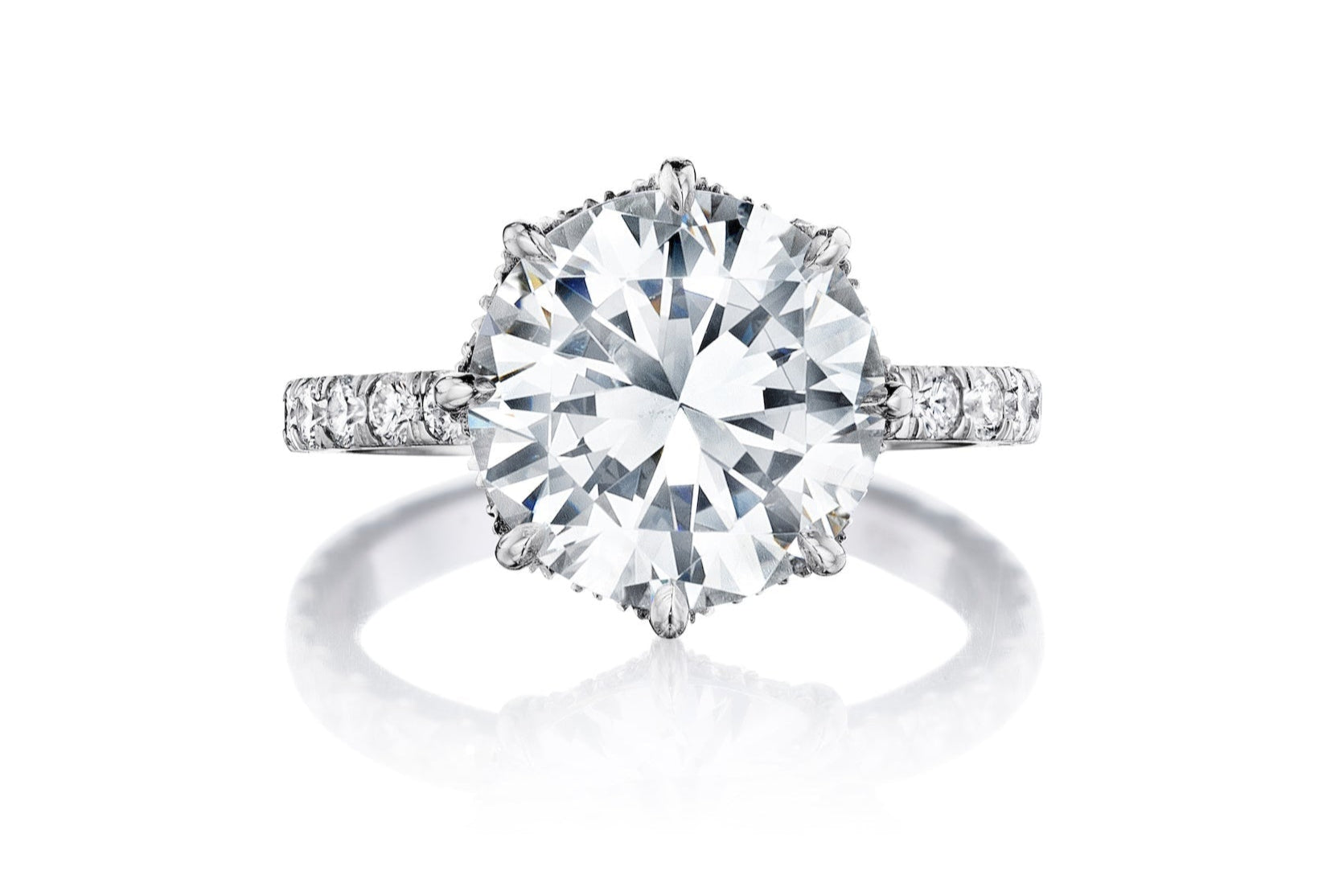
Step Cut
The Step cut is most recognizable in emerald cut diamonds. You can clearly see the long and rectangular facets running along the diamond. They have the look of a set of steps to the center of your diamond. Asscher cuts are another example of the step cut.

Mixed Cut
The mixed cut can be recognized in cushion cut diamonds. Mixed cuts combine faceting patterns from brilliant and step cuts to create a unique shape.
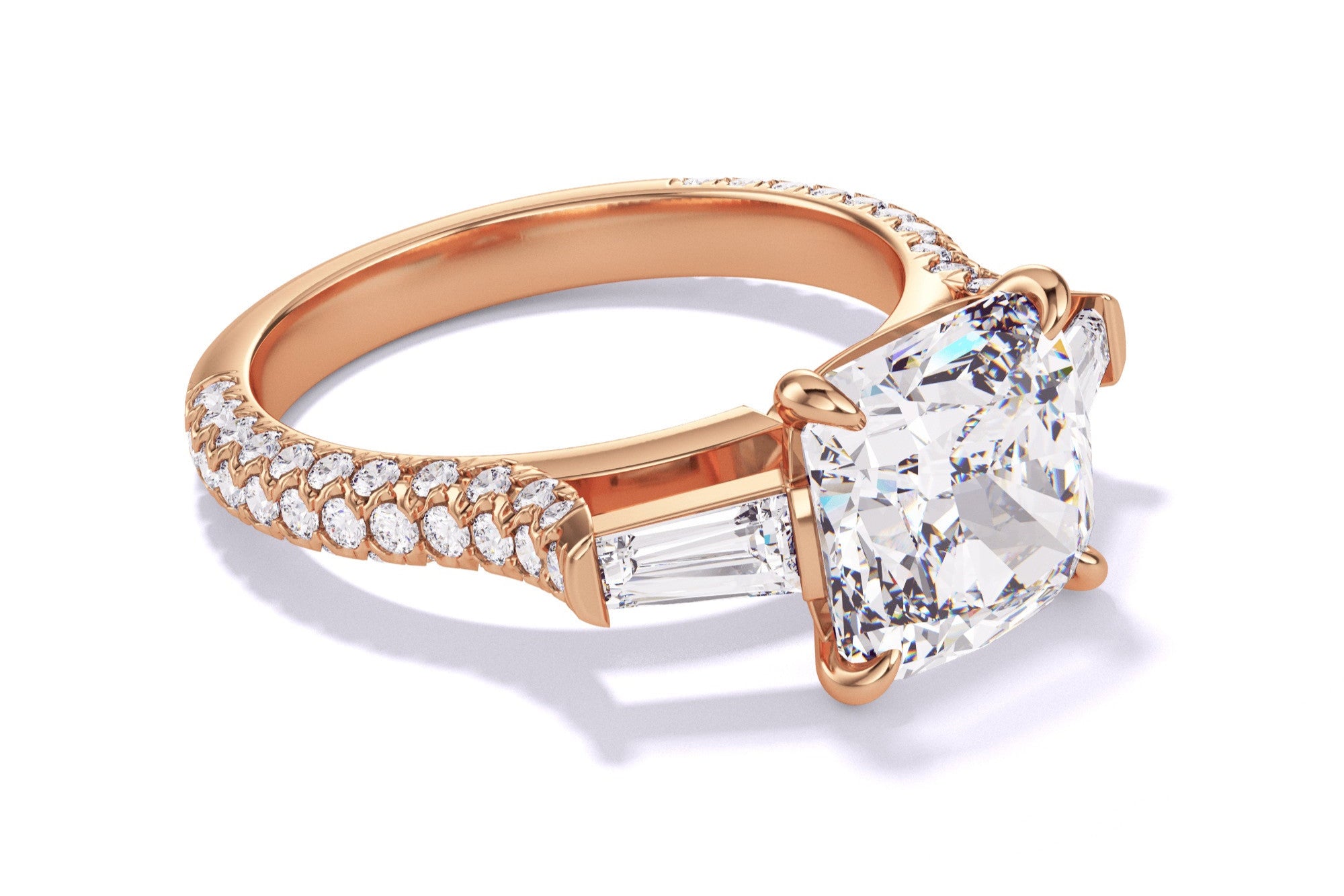
Do you have questions?
What is diamond cut?
What is diamond cut?
Diamond cut refers to how well a diamond has been shaped and faceted - not its shape, but the quality of its proportions, symmetry, and polish. A well-cut diamond reflects light beautifully, creating the brilliance and sparkle that diamonds are known for. At Lindsey Scoggins Studio, we only work with expertly cut diamonds that meet our high standards for light performance and beauty.
What diamond cut sparkles the most?
What diamond cut sparkles the most?
The round brilliant cut is considered the most sparkling diamond cut. With 58 precisely angled facets, it’s designed to reflect and refract the maximum amount of light. While other diamond cut types like oval, cushion, and radiant are different diamond cuts that also offer beautiful brilliance, the round brilliant consistently delivers the most fire and sparkle.
What is the difference between a diamond cut and a diamond shape?
What is the difference between a diamond cut and a diamond shape?
Cut refers to the quality of a diamond’s proportions, symmetry, and polish - factors that affect how light interacts with the stone. Shape, on the other hand, describes the physical outline of the diamond, such as round, oval, emerald, or pear. Two diamonds may share the same shape but have very different cut grades, which can dramatically impact their brilliance.
How do I contact your team with additional questions?
How do I contact your team with additional questions?
We’re here to help. You can contact our team directly by email at inquiry@lindseyscoggins.com or call or text us at 917-409-7123. You can also schedule a consultation through our website to discuss a custom design, diamond selection, or any questions about the process.
The 4Cs
Curation
Learn more about our diamond curation process and additional factors that we consider when selecting a diamond.
Color
A diamond’s color grade measures how white or colorless it is. Less color means higher quality. D means that a diamond is colorless.
carat
Carat is a diamond’s weight and the system used to measure diamonds. Bigger isn’t always better, cut and setting also affect how large it looks.
clarity
Clarity refers to the tiny natural marks called inclusions that are inside a diamond. Stones that look flawless to the eye are the most rare.




